Seemingly endless swathes of emerald land borders the road leading from Angkor International Airport into Siem Reap. Cows graze lazily, farmers tend to their paddy fields and I notice hammocks every few metres, strung between trees and poles, with locals enjoying a nap in them. If this is any indication of the pace of life here, the next few days promise to be an antidote to manic city living.
Cambodia was a French colony for 100 years, until the country gained independence in 1953. Evidence of its imperial past has been tastefully preserved in the form of colonial buildings such as FCC Angkor by Avani. Originally built to be the residence of the French governor, it later functioned as a police station during the Khmer Rouge era and then the Foreign Correspondents’ Club in the 90s, before it was renovated in 2019 by Avani Hotels & Resorts.
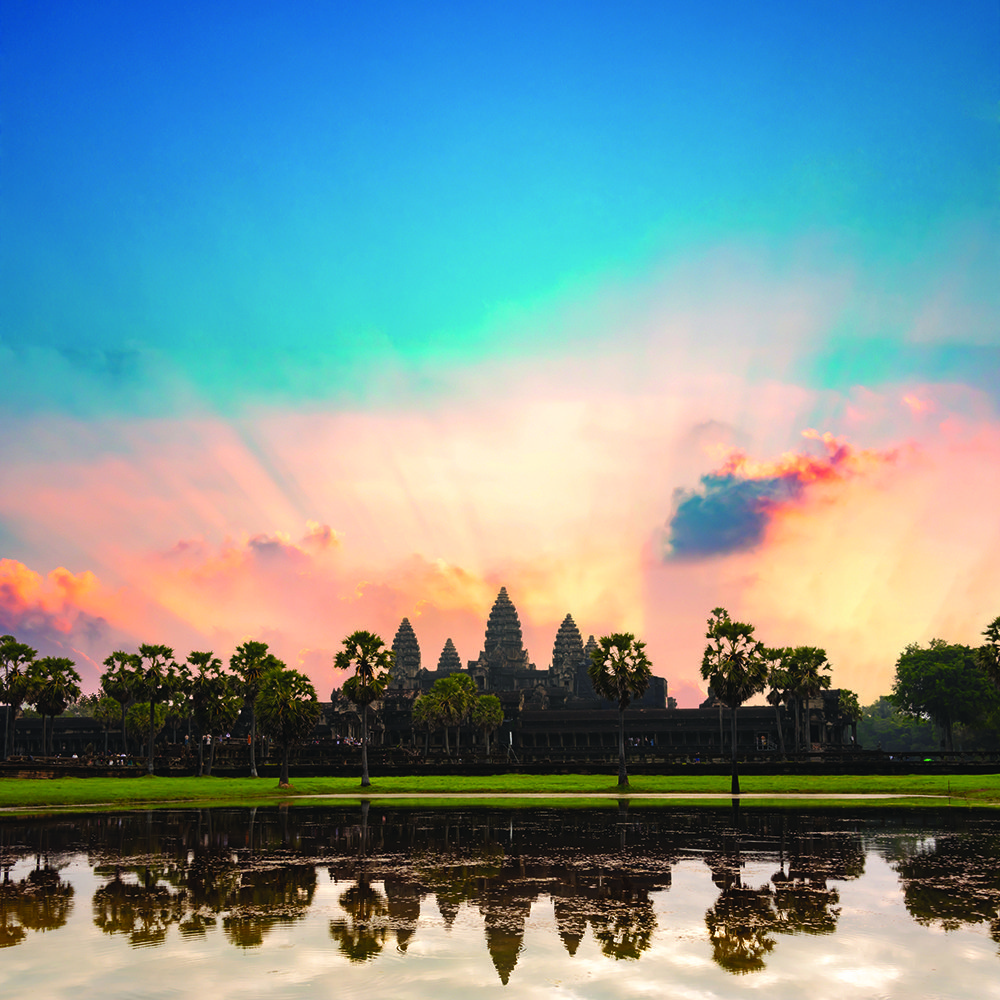
Angkor Wat is over 900 years old
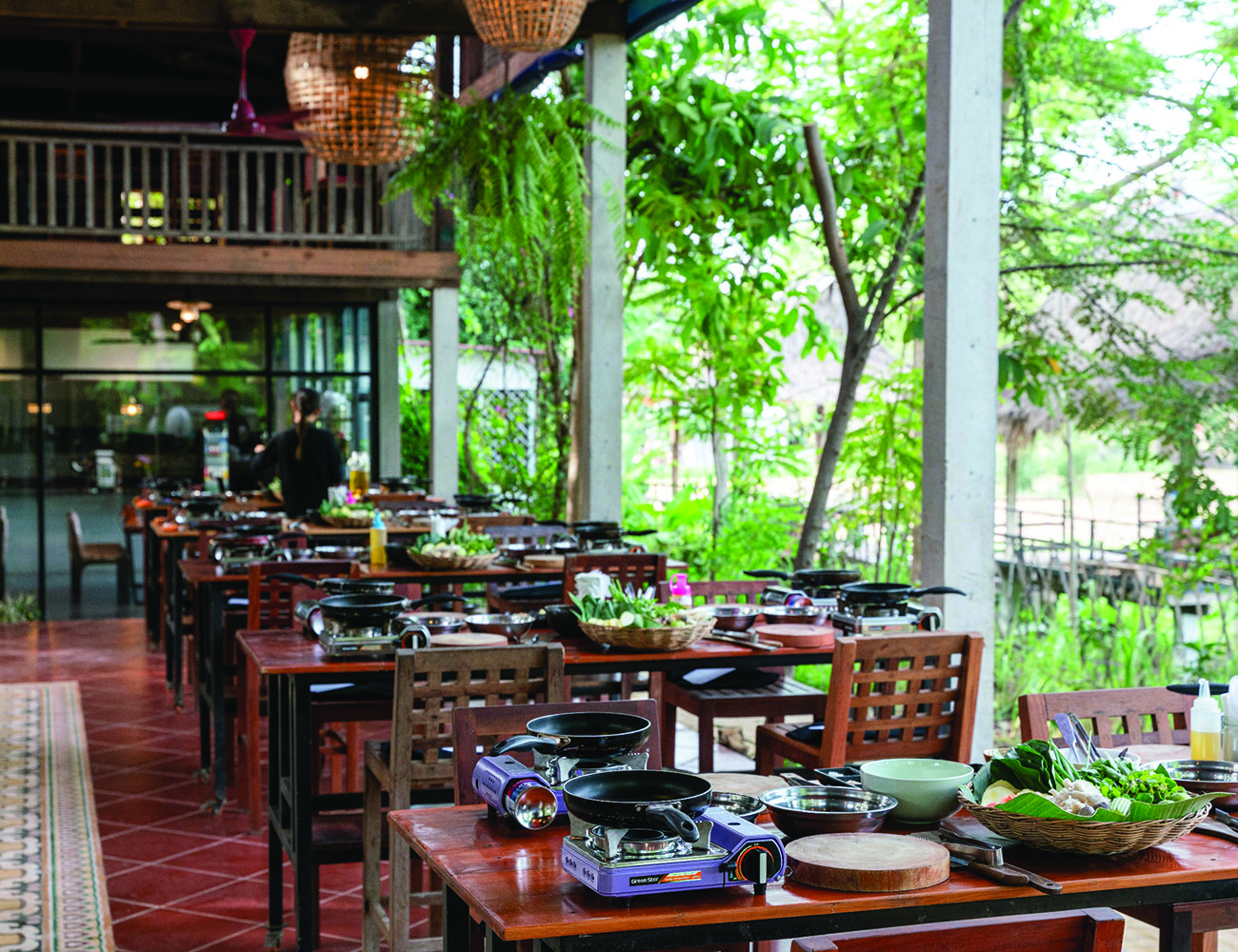
Master a few Khmer dishes at Lum Orng Cooking School
THE PROPERTY
The stately original structure now known as The Mansion, with floor-to-ceiling windows, antique cement-tiled flooring and a wide verandah overlooking a garden, functions as the heart of the hotel where guests congregate at mealtimes. The two residential wings on the property cohesively merge wood and limestone with touches of traditional Khmer architecture. Lush tropical foliage surrounds the saltwater pool in the heritage wing, while the premier wing’s ground floor rooms have balconies from where one might be tempted to swing their legs over the parapet and plunge into the pool – but don’t get carried away!
The hotel’s open-air arrival sala (reception), on a quiet tree-lined avenue, is where I was welcomed with a cold lemongrass-scented towel and cooling herbal drink. The property’s 80 guestrooms have been designed to harmoniously blend Western aesthetics with bright Khmer textiles and locally crafted furniture. Vintage typewriters, notepads, ceiling fans and rotary dial telephones add a touch of old-world charm to the décor. The deep stone bathtub is a prominent fixture in the room and, as I discover later, a warm soak in it proves to be the best remedy after a day of sightseeing.
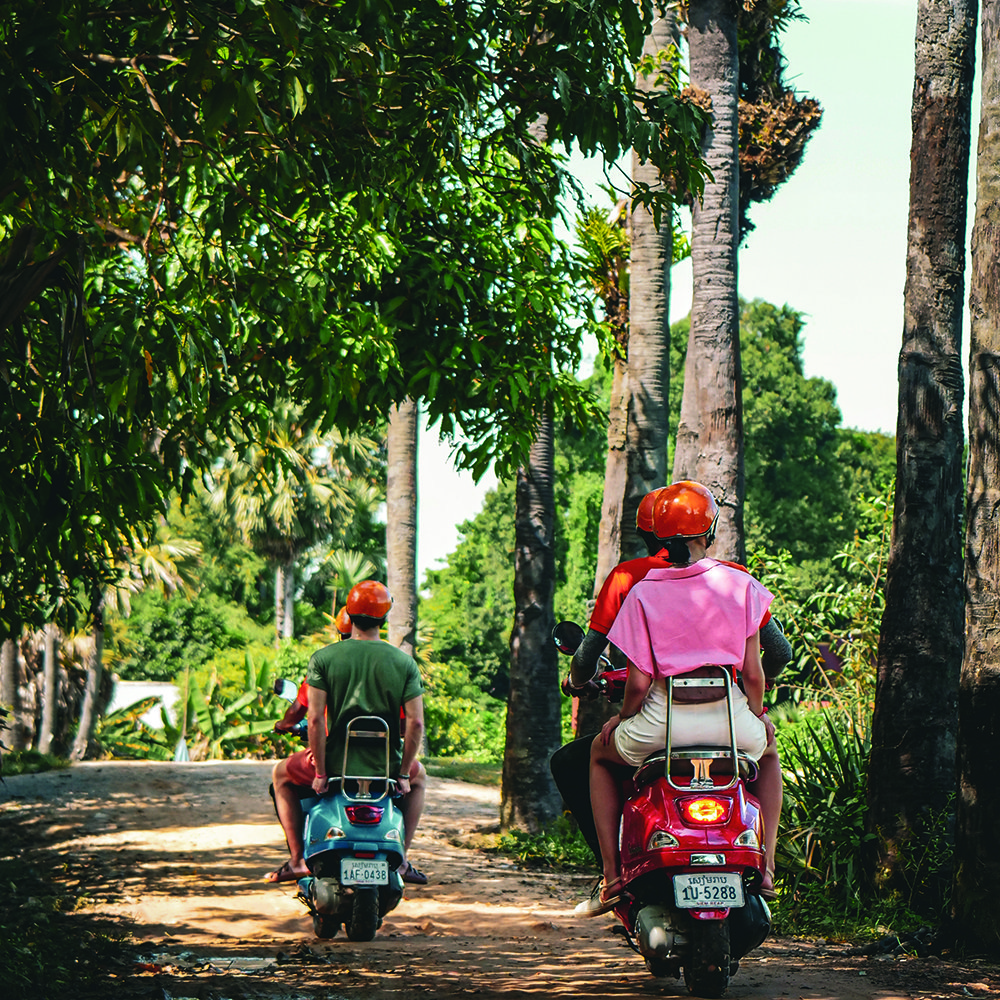
Vespa tours by Akim
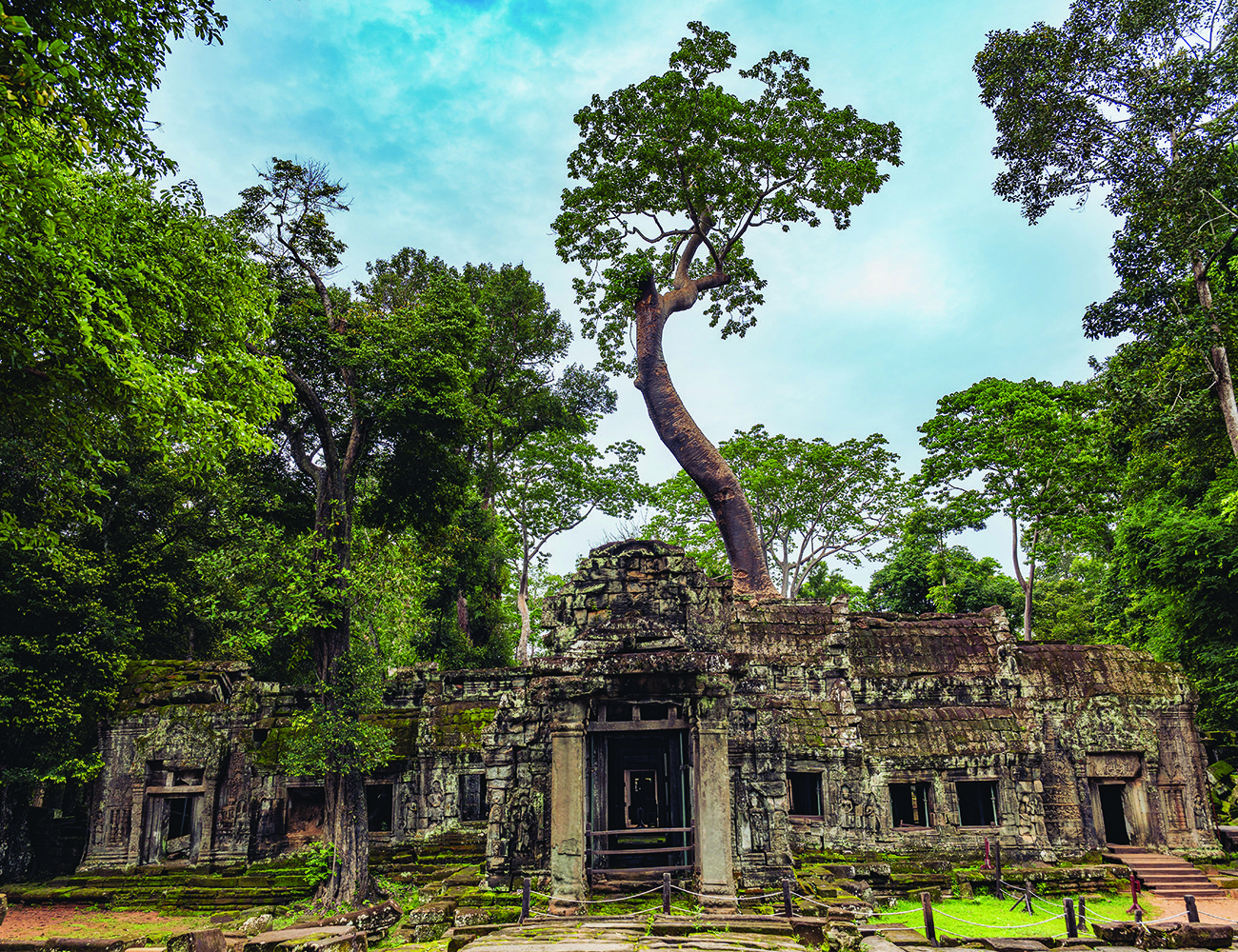
Ta Prohm
THE SPA
Soon after I arrive, I make a beeline for the hotel’s spa known as Visaya. Its extensive menu offers Khmer, Thai and Ayurvedic treatments ranging from detox and chakra balancing therapy massages to facials and body wraps. Therapists use scrubs and poultices made in-house without synthetic ingredients and pure essential oils to pamper, nourish and rejuvenate guests’ bodies. Since it’s my first time in Cambodia, I opt for a body scrub, made from fresh kaffir lime, lemongrass and honey followed by a traditional oil-free Khmer massage, which is believed to be the precursor of the Thai massage. The best way to describe the next 60 minutes is to liken my body to a ball of dough and my therapist, the expert baker, who gently stretches, pulls and kneads all the pockets of tension out of my body, leaving me in a blissful state, ready for my first meal at The Mansion.
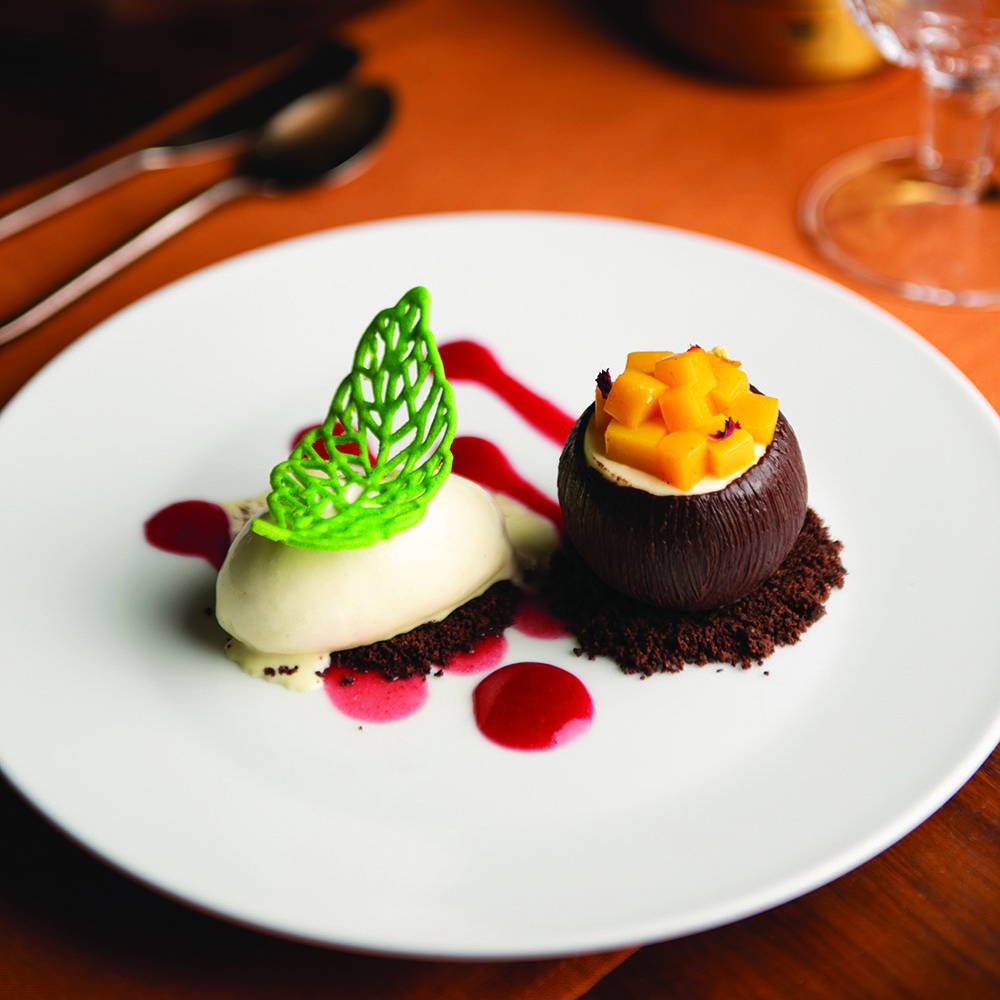
Mango coconut tart
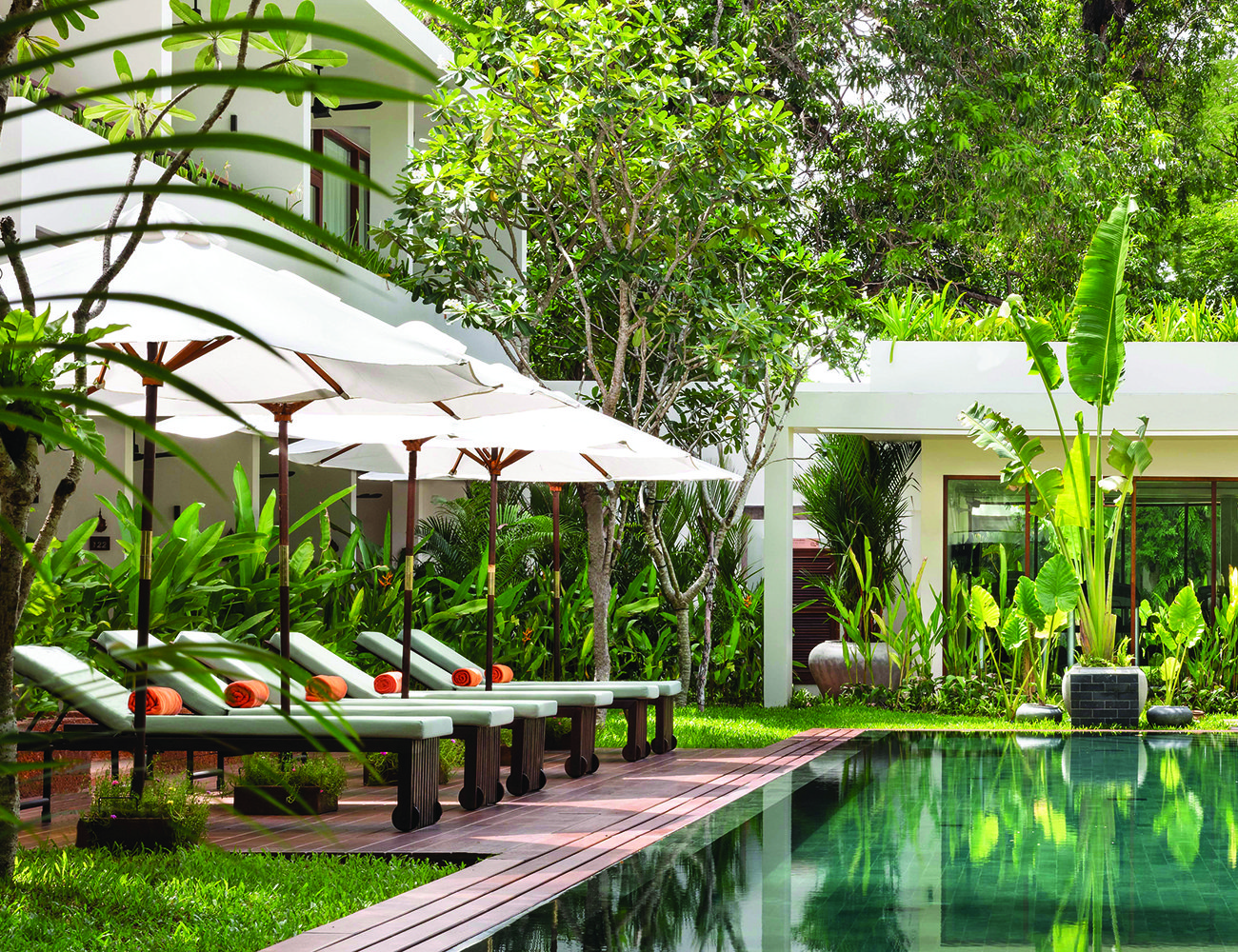
Saltwater pool in the hotel’s heritage wing
EAT
Afternoon tea is a relaxed, fuss-free affair. Instead of multiple tiered stands with delicate sandwiches, macarons and bite-sized cupcakes, I am presented with a tray neatly divided into 12 compartments containing prawn croquettes, dainty roasted duck wraps, mini croissants filled with smoked salmon, cream cheese and lettuce, warm waffles with chocolate sauce and cream, opera cake, freshly baked palmiers and cubes of fresh dragon fruit, mango and kiwi.
The culinary team crafts dishes from fresh vegetables grown by Cambodian farmers and fresh meat from an organic, free-range farm in Phnom Penh. Several ingredients such as chocolate, coconut and edible flowers are sourced from within Siem Reap.
Dinner is a foray into fine dining with three menus: get a taste of local flavours with the Khmer Journey; experience dishes conceived with a French touch on the International Voyage; and plant-based diners can indulge in the Garden Stroll. Or mix and match the dishes from all three.
Sticking with the Cambodian theme, I select the Khmer Journey starting with a tuna saku A4 ceviche. Served with cucumber broth, the tuna’s fresh flavour shines, while a caviar vinaigrette adds a zesty touch to balance the richness of the avocado and cream cheese. The second course is freshwater prawn tom yum soup, highlighting two popular ingredients in Cambodian cuisine – galangal and lemongrass. It is citrusy and light, even with the addition of coconut milk, and the natural sweetness of the prawns creates a perfect marriage with the earthy, peppery notes of galangal. Halibut fish curry is the final dish and it carries a kick from green chillies and plenty of texture from asparagus, broccoli, courgette and cauliflower.
My final pick is the mango coconut tart from the International Voyage.
I was expecting something akin to a lemon tart… it turned out to be a dark chocolate cup filled with layers of coconut cream, white chocolate and pandan sponge, topped with fresh mango, served alongside coconut ice cream topped with a delicate tuile.
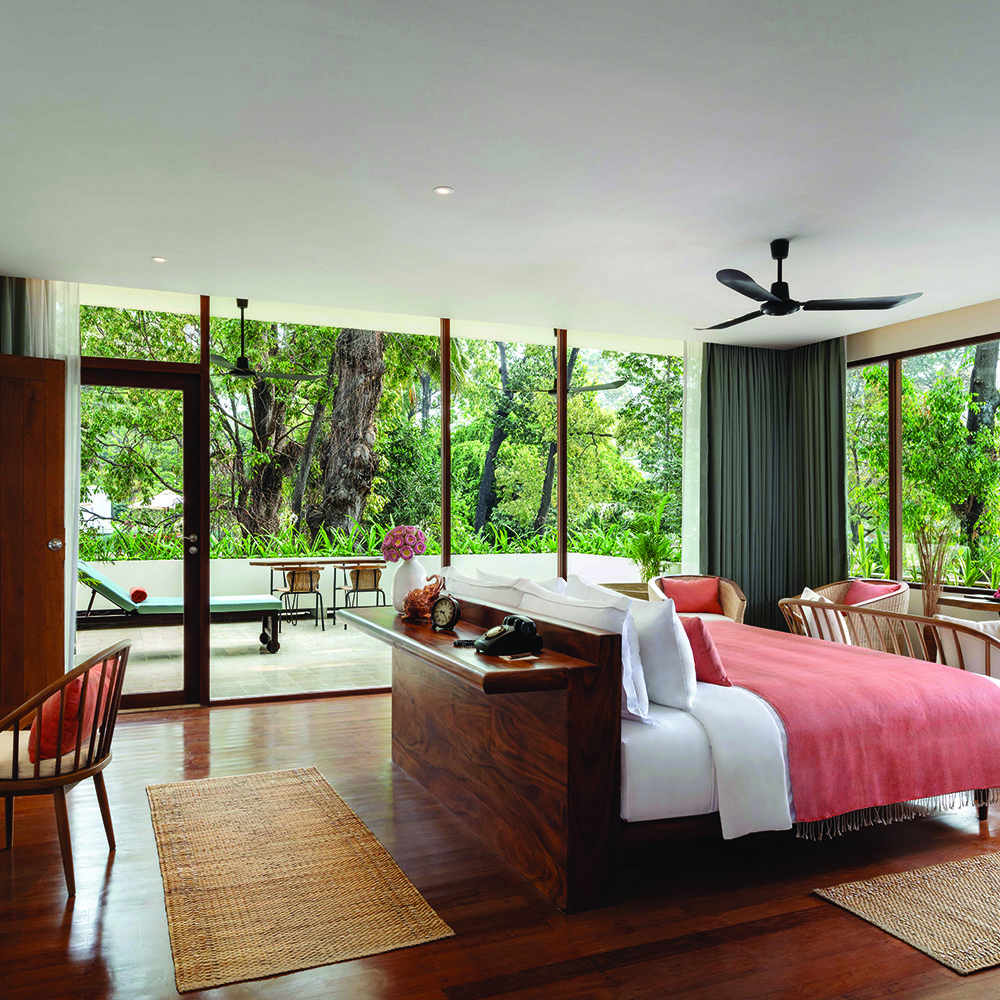
A family suite at FCC Angkor by Avani
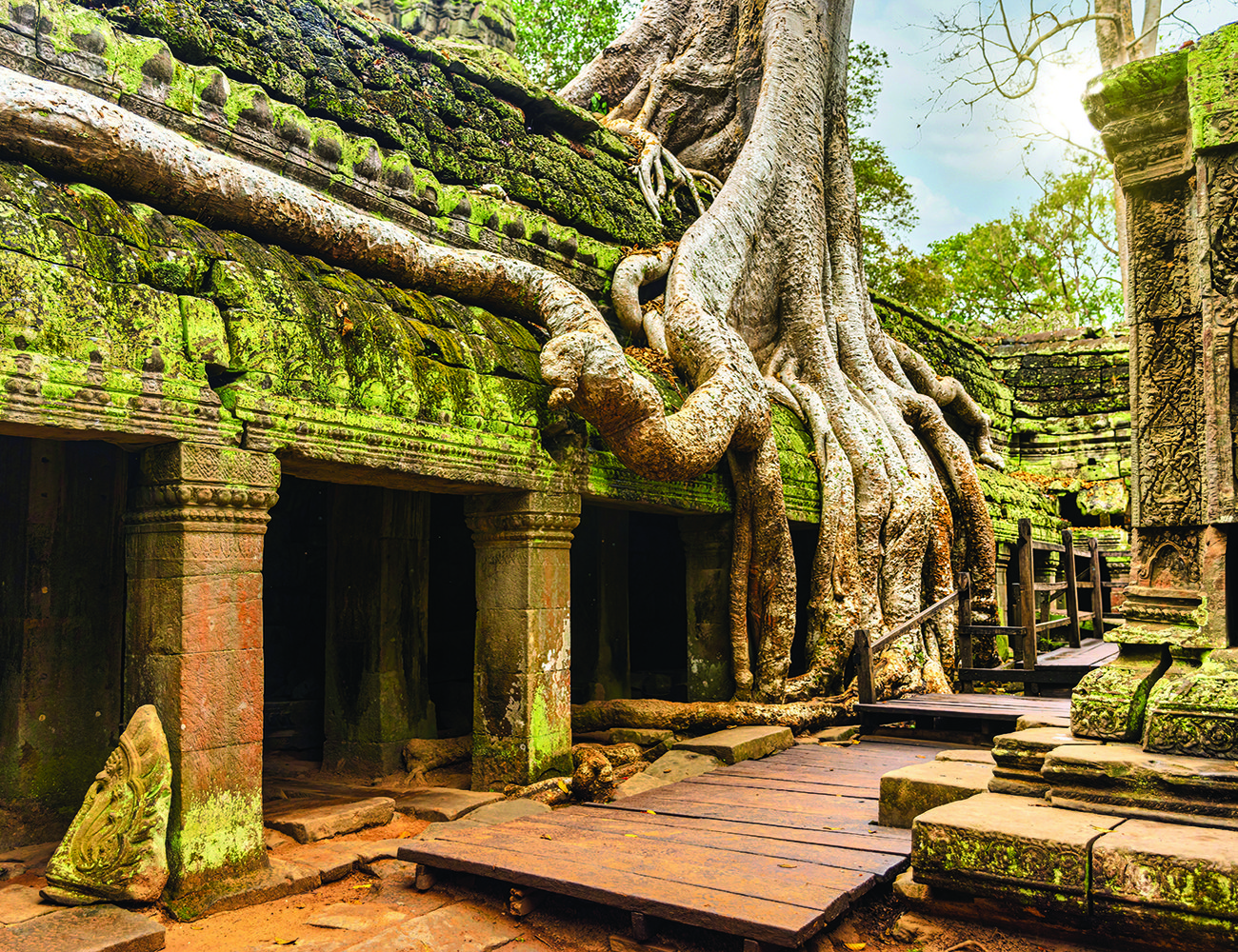
Strangler figs and silk cotton trees have merged with the structures at Ta Prohm
ANCIENT WONDERS
Around 5km from the centre of Siem Reap lies the Angkor Archaeological Park, a UNESCO World Heritage Site spanning over 162 hectares. The team at FCC Angkor collaborates with Adventures Cambodia, a local, woman-owned business which offers Vespa and Jeep tours of the World Heritage Site and the rural countryside around Siem Reap, accompanied by a guide.
Thick jungle still surrounds these ancient religious structures, adding to their sense of mystery and allure. Our guide Kim tells us that it took 700,000 men to build Angkor Wat and 5,000 elephants to pull the blocks of sandstone from which is it made. The walls are covered in intricately carved bas reliefs depicting scenes from everyday life as well as Khmer mythology. Kim mentions that modern-day buildings in Siem Reap cannot be taller than Angkor Wat, which means they can’t be higher than 65 metres.
Ta Prohm, which featured in Lara Croft: Tomb Raider, surpasses all the others in my expectations. It’s a spectacular testimony to the power of nature, which absorbed the structure back into the jungle after it was abandoned in the 15th century. Ta Prohm was built without mortar, which made it easy for the roots of soaring silk cotton trees and strangler figs to push through the blocks of stones making them one with the structure, giving the complex a Tolkienesque vibe – I almost expect to see portals leading to Middle Earth around every corner.
MASTERCLASS
For an insight into traditional Khmer cuisine, attend a masterclass at Lum Orng Cooking School. This farm-to-table concept located on the outskirts of Siem Reap has its own organic vegetable garden where most of the produce used in the cooking classes is grown. I arrive just as a downpour begins so a tour of the garden to pick fresh veggies and herbs for my lesson is out of the question. Instead, chef Sopheak, who teaches here, shares insights into Khmer cuisine while showing me how to make green mango salad with fresh shrimp, which I get to flambé under his watchful eye.
Fresh seasonal vegetables and aromatics are key to achieving a fine balance of flavours, with lemongrass being a central ingredient. Surprisingly, even though Thailand occupied Cambodia for 300 years, traditional Cambodian food isn’t spicy, with chillies and spicy condiments being served on the side. A spice paste made from a blend of fresh lemongrass, turmeric, galangal, garlic, shallots and kaffir lime figures prominently in several dishes including fish amok, a local speciality made with coconut milk that’s also taught at Lum Orng.
With the rain pouring down, I savour each mouthful of the hot and sour chicken soup I made from scratch using a handful of simple ingredients, while chef Sophaek tells me about his experience cooking with Gordon Ramsay in Phnom Penh, knowing I’ll carry these memories of Siem Reap in my heart forever.
For more information, visit avanihotels.com




